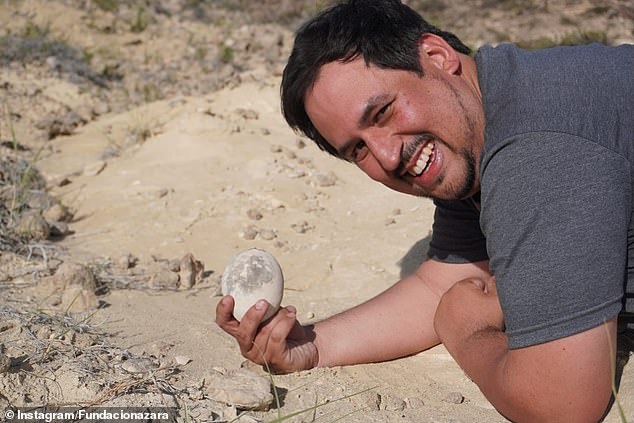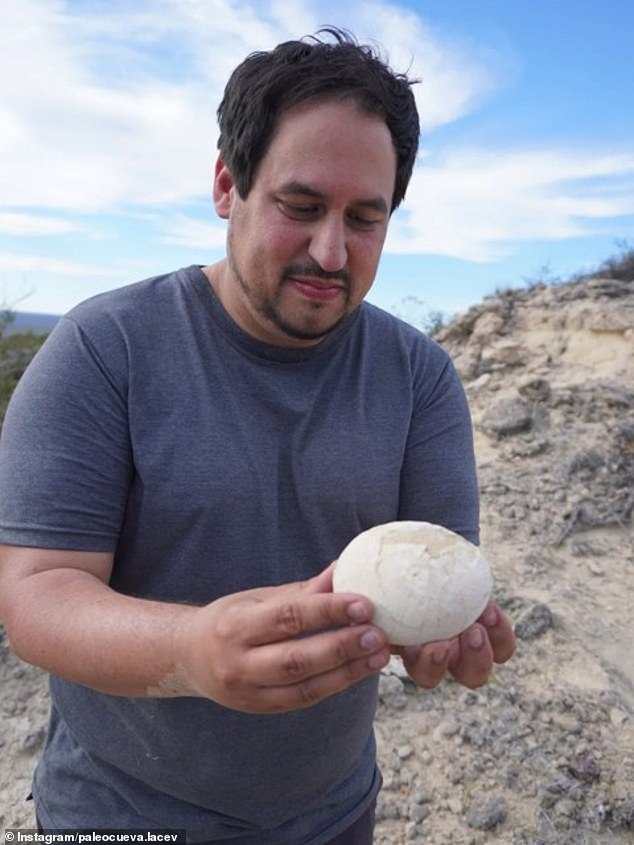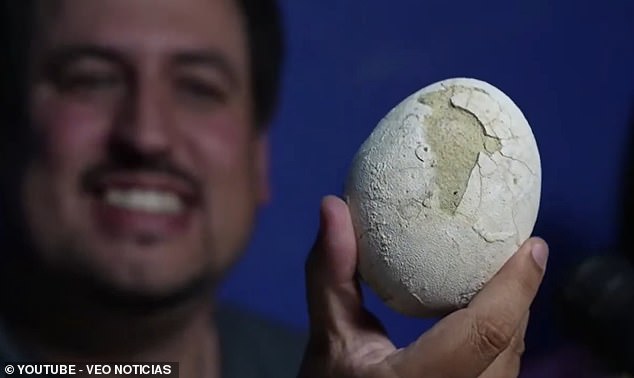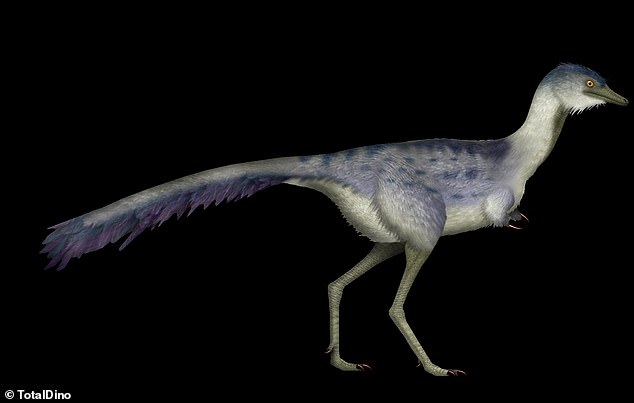It looks like it could have been laid yesterday.
But believe it or not, this dinosaur egg, recently unearthed in Argentina, dates back 70 million years.
The ancient egg was discovered in Rio Negro in Patagonia and has left experts around the world stunned.
While it appears remarkably similar to an ostrich egg, it was likely laid by a member of the Bonapartenykus genus – a small, carnivorous therapod that prowled the region during the late Cretaceous period.
Although dinosaur eggs have been found in the area before, one this well preserved is rare.
It may even contain embryonic material, according to the archaeology team – who plan to carry out in–depth scans to find out.
‘It was a complete and utter surprise,’ Gonzalo Muñoz, from the Bernardo Rivadavia Argentine Museum of Natural Sciences, told National Geographic.
‘It’s not uncommon to find dinosaur fossils, but the issue with eggs is that they are much less common.’

Although dinosaur eggs have been found in the area before, one this well preserved is rare and likely belonged to a small, carnivorous therapod

Pictures from the site show group leader Federico Agnolín stumble across the egg, which appeared to be resting on the surface of the dusty ground
He explained that eggs from carnivorous dinosaurs are especially rare for several reasons.
‘First, there are fewer carnivores than herbivores,’ he said. ‘But apart from that, their eggs are more avian–like since the carnivorous dinosaur lineage is the one that will give rise to birds.
‘Therefore, they’re going to be more delicate eggs, with much thinner shells more prone to destruction.
‘Finding those types of eggs are more difficult. That’s why this discovery is so exceptional and spectacular.’
The egg, along with other findings from the site, will be sent to the Argentine Museum of Natural Sciences to be studied.
He said he hopes the egg contains an embryo, but in–depth scans will be needed to determine if there is anything inside.
If traces of a developing dinosaur are found, it would mark one of the most important paleontological breakthroughs in South American history and provide new detail about how dinosaurs developed and hatched.
The Cretaceous Expedition I also uncovered mammal teeth and snake vertebrae, indicating the site was once a nesting ground.

Federico Agnolín proudly shows off the incredible fossilised egg. The team said they don’t yet know if it holds embryonic material

Previous research suggests this is what Bonapartenykus may have looked like (artist’s impression)
A video taken at the site shows group leader Federico Agnolín stumble across the egg, which appeared to be resting on the surface of the dusty ground.
His excitement is palpable as he realises he has come across such a well–preserved specimen.
Other, broken eggs can also be seen in the vicinity, with fragments held up to the camera.
The caption on the video, shared to Instagram, reads: ‘This is quite possibly the first discovery of its kind in South America.
‘As you can see, this fossil is more than 70,000,000 years old and it was not alone – we found a cluster!’
